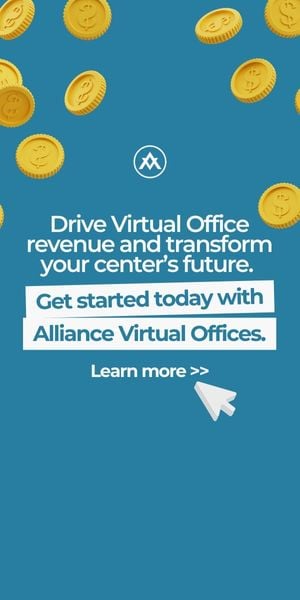- Both technology and coworking spaces are ever evolving, so new tech is always finding ways to change these spaces.
- It’s possible that drones will be used in centers in the future — either to assist workers with tasks or to survey the area.
- Hybrid workstyles are increasing, leading to coworking industry growth that will require new tech to manage centers well.
At the height of the pandemic, it seemed like working remotely was going to last forever and that returning to the office would never be required again.
Unfortunately for some, this hasn’t quite been the case. While remote work is still more popular now than it was before the pandemic and in-office work continues declining, hybrid workstyles are quickly becoming the preferred method of work for employees all over the world.
According to a recently published article by Gallup, more than 50% of remote-capable workers are working in hybrid positions and that number is expected to increase throughout the year.
This influx of hybrid workstyles has brought along countless new coworking spaces all over the world. Naturally, the introduction of new coworking locations has workers curious about what they can expect from these spaces in the future.
Most of these coworking spaces are already loaded with amenities and services for members, and as technology keeps advancing, these spaces will only improve.
Here are some predictions about new technologies that may infiltrate coworking spaces soon.
The future of coworking tech
Precisely what the future of coworking holds will reveal itself over time, but based on current technology trends and recent developments, we can make some educated predictions.
Coworking spaces aren’t meant to be invasive, but as employee monitoring technology and other forms of automated micromanagement become popular, coworking spaces may get a bit dystopian.
Here are some recent technological advancements — plus some other less fun tools — and how they may come to be used in the growing number of coworking spaces.
Biometric systems
When things get popular, they become susceptible to bad actors. As facial recognition and other security-geared technologies improve, it’s easy to imagine coworking spaces using these technologies to dictate who enters the office.
Whether these biometric systems are fingerprint scanners or facial recognition remains to be seen, but considering the facial recognition technology that about half of Americans have in their pockets, it’s easy to see a future with biometric systems in place.
Outside of these security options, some businesses may start using biometric systems as timekeepers. For example, perhaps workers using the coworking space must sign in with a fingerprint upon arrival and sign out with the same fingerprint when the day is complete.
Smart-building automation
Some spaces are likely already using some kind of smart-building systems, like automated lights and other automatic tools, but the technology will only improve.
Sure, automatic lights are great, but imagine a coworking space with smart temperature controls that can observe the occupancy and air quality in a given room and make necessary adjustments for optimal temperature and air quality, all without any human interference.
Computer “vision”
This one is a bit more frightening, but there is a solid chance that businesses utilizing coworking spaces will implement computer “vision” technologies in the name of employee monitoring.
Ostensibly, this will look like webcam spying, but legal and done under the guise of productivity and profitability.
One of the dangers of technology improving so quickly and fiercely is the introduction of tools like this that are inherently invasive but still legal.
With computer “vision” technologies, employers can tell how long workers are at their desks, how much work they’re doing, what breaks they’re taking, and how engaged they look throughout the day.
Drones
With drones, future coworking technology can go both ways.
On the lighter side, drones might be used for package and supply deliveries, making the process of restocking the coworking spaces even easier than before. For time-sensitive documents or deliveries, a fast-acting drone would be a massive benefit to any coworking space.
These drones could also be used to host tours of the coworking space, provide some lighthearted entertainment for employees using the space, and even handle smaller, routine maintenance tasks.
On the flip side, drones could be used for member tracking, furthering the surveillance introduced with computer vision.
Employers may watch workers while they’re at their desks, then when they step away, they may use in-office drones to keep a constant eye on what their employees are doing while they’re not at their desks.
Additionally, drones could be used for data collection and in their current form, can be quite loud. Imagining a coworking space with an obnoxiously loud drone that tracks your every movement is a particular kind of nightmare.
Regardless of which direction these future coworking tools and services go, one thing is certain: they’re coming.


 Dr. Gleb Tsipursky – The Office Whisperer
Dr. Gleb Tsipursky – The Office Whisperer Nirit Cohen – WorkFutures
Nirit Cohen – WorkFutures Angela Howard – Culture Expert
Angela Howard – Culture Expert Drew Jones – Design & Innovation
Drew Jones – Design & Innovation Jonathan Price – CRE & Flex Expert
Jonathan Price – CRE & Flex Expert














